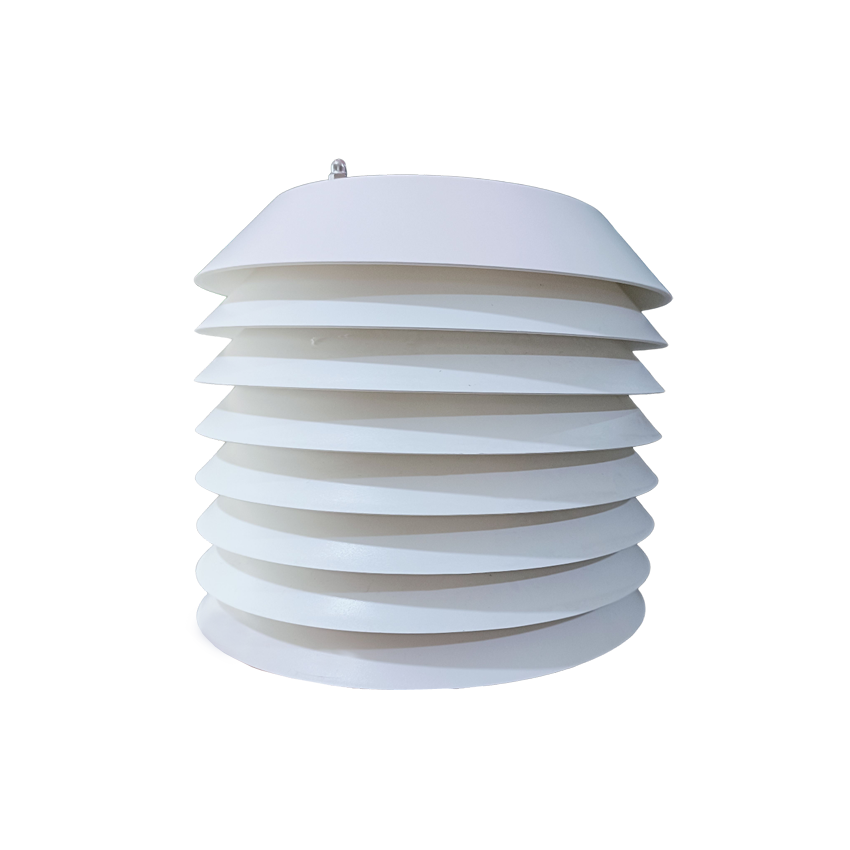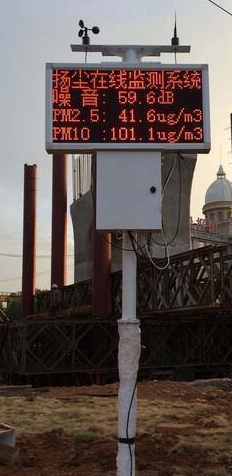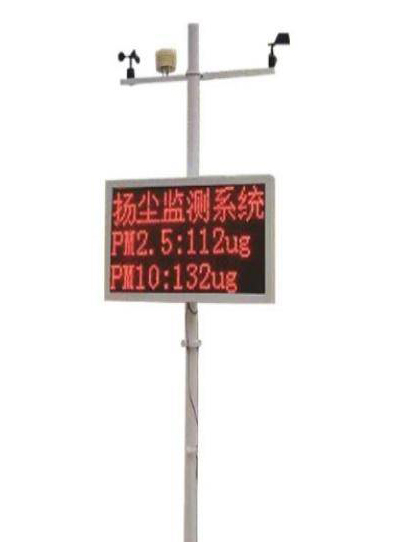

— Blogs —
—Products—
 Consumer hotline +8618073152920
Consumer hotline +8618073152920 WhatsApp:+8615367865107
Address:Room 102, District D, Houhu Industrial Park, Yuelu District, Changsha City, Hunan Province, China
Product knowledge
Time:2024-11-21 14:06:10 Popularity:288

PM10 refers to particulate matter with a diameter less than or equal to 10 micrometers. These particles are often referred to as inhalable particles or dust. Due to their small size, they can remain suspended in the air and be inhaled into the human respiratory system, potentially causing health problems, including respiratory diseases and cardiovascular issues. PM10 has a wide range of sources:
- Natural Sources: Sandstorms, volcanic eruptions, etc.
- Man-made Sources: Industrial emissions, vehicle exhaust, road dust, agricultural activities, etc.
A PM10 sensor is a device designed to detect the concentration of PM10 particles in the air. It can monitor the level of PM10 in real-time, providing data to support environmental management and health protection.
3. Working Principles of PM10 Sensors

- Principle: The sensor emits a laser or LED light, and when particles in the air pass through the light beam, they scatter the light. The angle and intensity of the scattered light are related to the size and concentration of the particles.
- Advantages: High sensitivity, fast response, and broad measurement range.
- Disadvantages: Environmental conditions must be controlled, and optical components require regular cleaning.
- Principle: This method measures the extent to which PM10 particles absorb beta rays, which correlates with their concentration.
- Advantages: Accurate measurements, suitable for long-term monitoring.
- Disadvantages: Higher equipment costs and operational complexity.
- Principle: A specific volume of air is collected, and the weight of the particles is measured to calculate the concentration.
- Advantages: Accurate measurements, suitable for laboratory use or high-precision monitoring.
- Disadvantages: Larger size, not suitable for portable devices.
- Assessing Health Impact: By monitoring PM10 concentration, sensors help assess the health effects of air pollution and allow for protective measures.
- Alert Function: If PM10 concentration exceeds a preset threshold, the sensor can issue an alert, notifying relevant authorities and the public to take preventive measures.
- Data Support: PM10 sensors provide valuable data to support environmental protection and pollution control efforts, assisting in the creation and evaluation of environmental policies.
- Real-time Monitoring: Provides real-time monitoring of airborne particle concentrations, giving environmental agencies timely, accurate data.
- Reducing Threats: By issuing warnings when PM10 concentrations are dangerously high, these sensors help reduce the public health risks posed by air pollution.
- Supporting Research: PM10 sensors provide essential data for fields such as atmospheric science and environmental research, enabling scientists to better understand the formation, dispersion, and impact of air pollution.
- Emission Monitoring: In factories, mines, and other industrial environments, these sensors monitor dust levels to ensure worker health and safety.
- Environmental Compliance: PM10 sensors help industrial enterprises comply with environmental regulations and sustainability goals.
- Automation Control: These sensors can be integrated into air purifiers and smart home systems, allowing for automated control and management of indoor air quality.
- User-Friendly: PM10 sensors offer intuitive interfaces and data visualization, enhancing user experience.

- Urban Air Quality Monitoring Stations: Integrated into city-wide environmental monitoring networks, providing real-time data.
- Public Spaces like Parks and Schools: Monitoring air quality to protect public health.
- Home Air Purifiers: Monitoring indoor air quality and automatically adjusting purification modes.
- Smart Home Systems: Real-time air quality monitoring and automatic adjustment for a healthier indoor environment.
- Factories and Mines: Monitoring air quality during production processes to meet health and safety standards.
- Construction Sites: Controlling dust pollution and meeting environmental regulations.
- Universities and Research Labs: Conducting experiments and analysis on particulate matter concentration for scientific study.
- Multi-Sensor Meteorological Stations: Providing air quality data to support weather forecasting and research.
- Transport Routes, Airports, and Ports: Monitoring the impact of traffic emissions on air quality, aiding traffic control and navigation systems.

Choosing the right PM10 sensor involves several factors, including performance, application needs, environmental conditions, and budget. Here are key points to consider:
- Accuracy: Select a sensor with high precision to ensure accurate measurements. Common accuracy metrics include relative and absolute errors.
- Stability: Ensure the sensor remains stable over time, especially in outdoor or harsh environments. Check for temperature and time drift characteristics.
- PM10 Measurement Range: Ensure the sensor’s measurement range meets your needs, typically from 0 to 2000 µg/m³ for PM10.
- Minimum Detectable Particle Size: Consider the smallest particle size that the sensor can detect, such as 0.3 µm.
- Temperature and Humidity: Ensure the sensor can function correctly under expected environmental conditions, such as a temperature range of -20°C to +60°C and humidity range from 0% to 99% RH.
- Dust and Water Resistance: For outdoor or industrial use, choose a sensor with a high protection rating (e.g., IP65 or higher).
- Output Form: Select the appropriate output interface for your data acquisition system, such as RS485, 4-20mA, or analog voltage outputs.
- Wireless Communication: For remote monitoring, consider sensors with wireless communication options like Wi-Fi, LoRa, or Bluetooth.
- Power Consumption: Choose low-power sensors, especially for battery-powered applications.
- Power Supply: Ensure the sensor is compatible with your power system, such as DC 12V, 24V, or other customized power options.
- Installation Type: Consider whether the sensor is wall-mounted, pipe-mounted, or portable.
- Maintenance Requirements: Opt for low-maintenance or maintenance-free sensors to minimize ongoing operational costs.
- Temperature Compensation: Some advanced sensors come with temperature compensation to ensure stable measurements across varying temperatures.
- Self-Diagnosis: Choose sensors with self-diagnosis features to quickly detect and resolve potential issues.
- Price: Choose a sensor that balances performance with your budget, but don’t compromise on essential features or reliability.
- Total Ownership Cost: Consider not only the initial purchase cost but also installation, maintenance, and replacement costs.
- Brand Reputation: Opt for well-known brands with good market reputations.
- Technical Support: Ensure that the supplier offers strong technical support and after-sales service, especially when troubleshooting or encountering issues.
1. Identify Requirements: Determine the application (e.g., environmental monitoring, industrial production, or home health), required measurement accuracy, range, and environmental conditions.
2. Filter Sensor Options: Based on these needs, filter out sensors that meet the requirements.
3. Compare Parameters: Compare technical parameters like accuracy, stability, power consumption, and communication interface across models.
4. Consult Suppliers: Contact suppliers to get more detailed information and user reviews.
5. Test Samples: If possible, buy a small number of samples for testing to ensure the sensors meet real-world needs.
6. Final Selection: After considering all factors, choose the most suitable PM10 sensor.
Conclusion
PM10 refers to particles with a diameter of 10 micrometers or less, which can have significant effects on human health and atmospheric visibility. A PM10 sensor is designed to monitor the concentration of these particles in the air, using techniques such as light scattering, beta ray absorption, or gravimetric methods. These sensors play a critical role in health monitoring, environmental management, scientific research, industrial applications, and smart device integration. By using a PM10 sensor, we can better understand and control air pollution, helping to protect public health and environmental quality.
Related recommendations
Sensors & Weather Stations Catalog
Agriculture Sensors and Weather Stations Catalog-NiuBoL.pdf
Weather Stations Catalog-NiuBoL.pdf
Related products
 Combined air temperature and relative humidity sensor
Combined air temperature and relative humidity sensor Soil Moisture Temperature sensor for irrigation
Soil Moisture Temperature sensor for irrigation Soil pH sensor RS485 soil Testing instrument soil ph meter for agriculture
Soil pH sensor RS485 soil Testing instrument soil ph meter for agriculture Wind Speed sensor Output Modbus/RS485/Analog/0-5V/4-20mA
Wind Speed sensor Output Modbus/RS485/Analog/0-5V/4-20mA Tipping bucket rain gauge for weather monitoring auto rainfall sensor RS485/Outdoor/stainless steel
Tipping bucket rain gauge for weather monitoring auto rainfall sensor RS485/Outdoor/stainless steel Pyranometer Solar Radiation Sensor 4-20mA/RS485
Pyranometer Solar Radiation Sensor 4-20mA/RS485
Screenshot, WhatsApp to identify the QR code
WhatsApp number:+8615367865107
(Click on WhatsApp to copy and add friends)